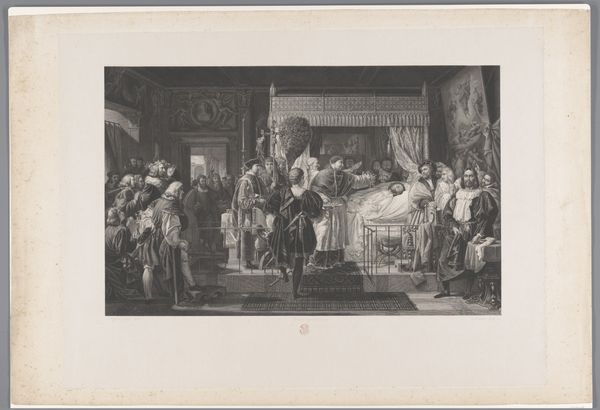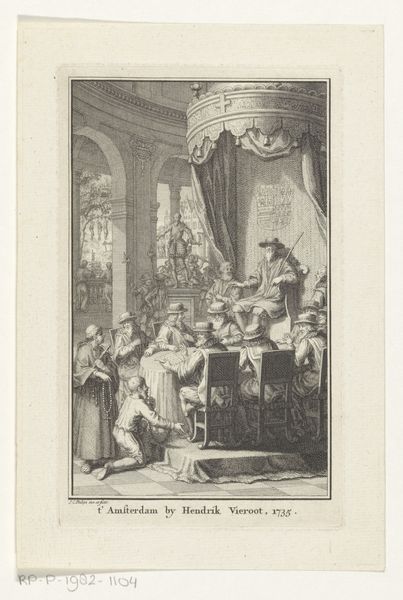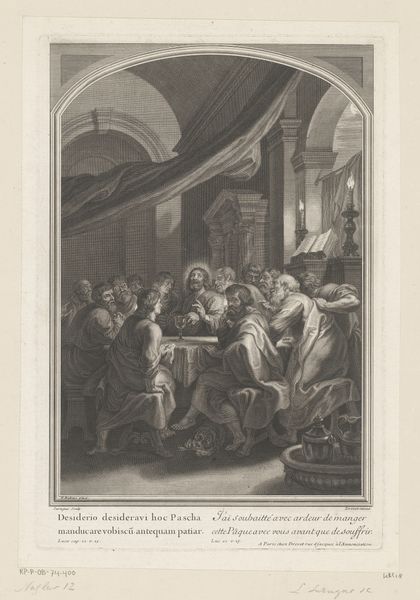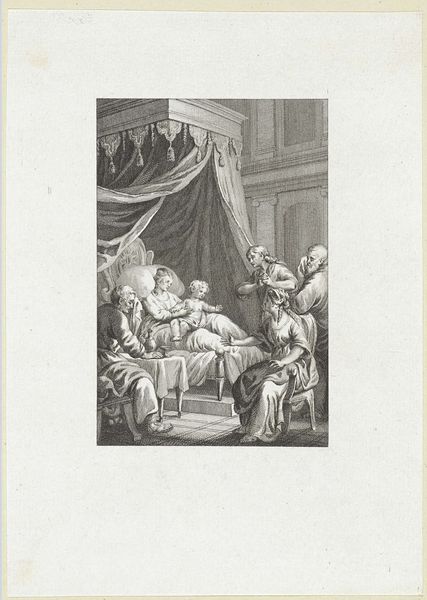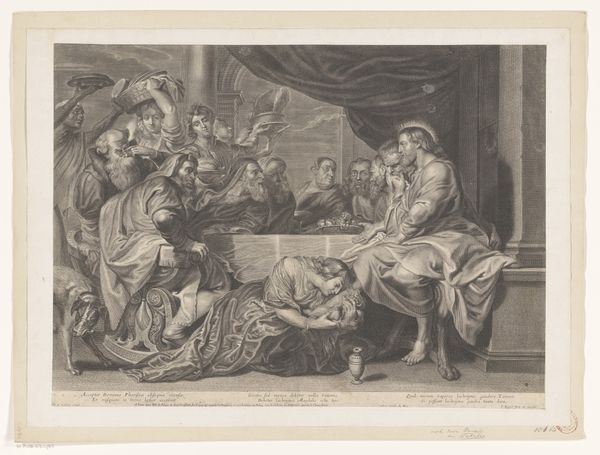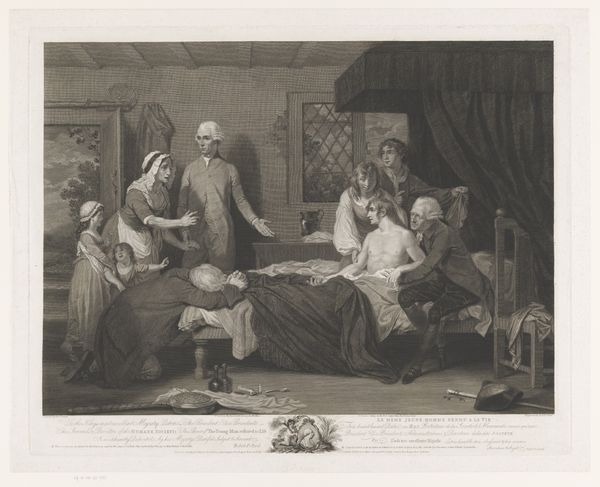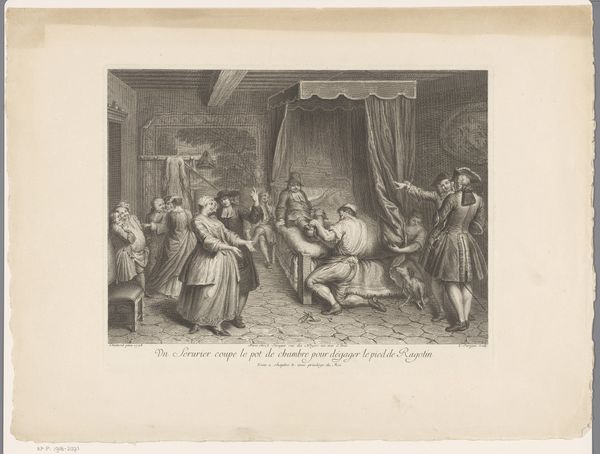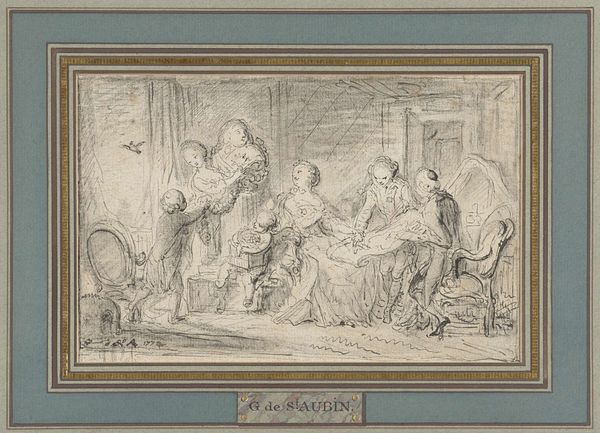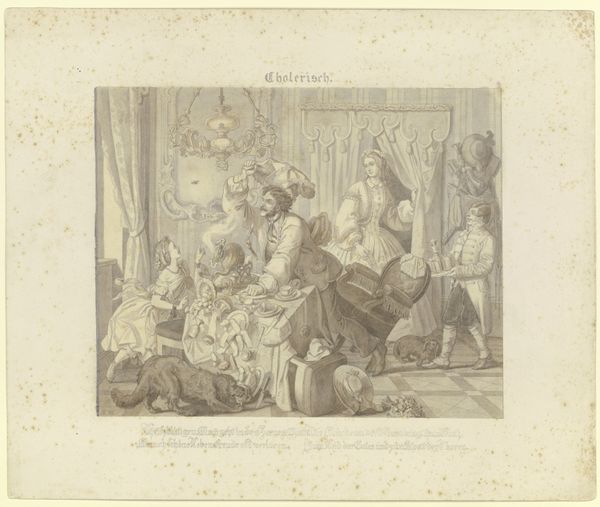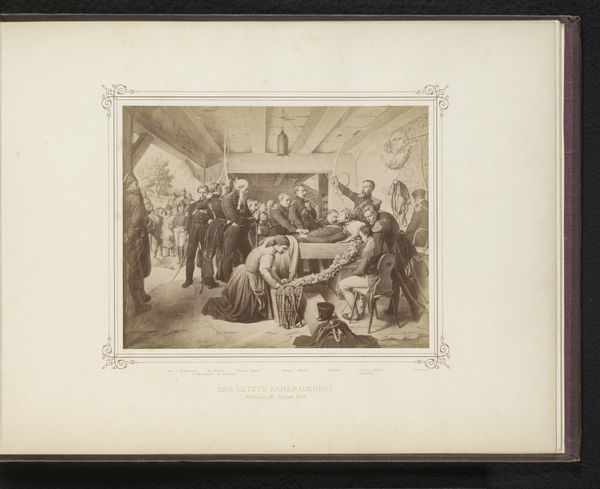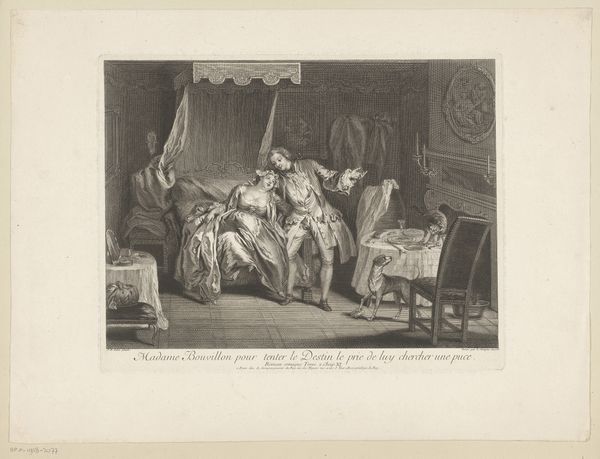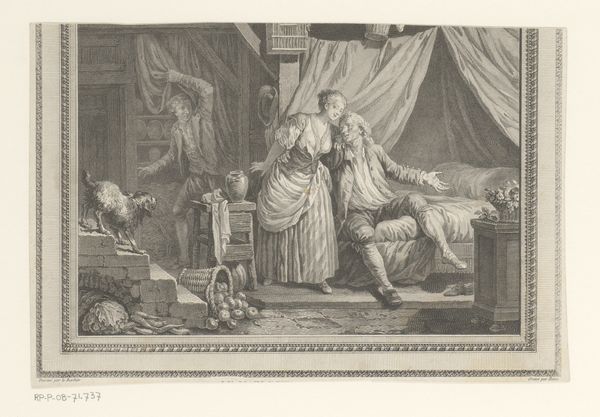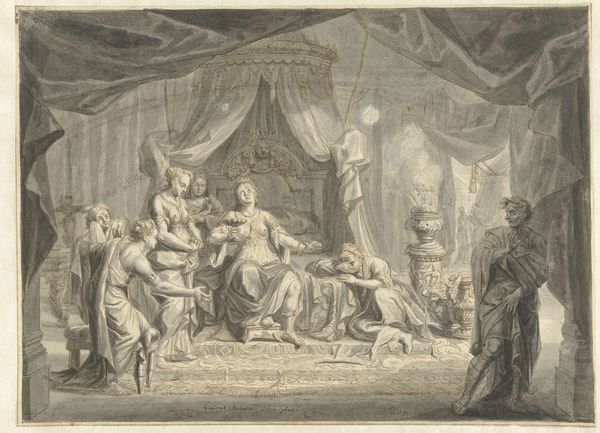
Dimensions: 7 3/16 x 12 13/16 in. (18.3 x 32.6 cm)
Copyright: Public Domain
Curator: What grabs me immediately about Louis Lafitte's "The Last Supper," dating back to 1790, is its quiet intimacy. The etching and engraving techniques, the cool tones—it’s a moment caught between candlelight and shadow. Almost a whisper of a monumental event. Editor: Whisper is right. The composition feels stagey to me, very much playing to a certain sensibility about how historical and biblical scenes should be rendered. I can practically hear the hushed tones of the aristocratic salon it was probably first displayed in. But tell me more about Lafitte. Where does this work fit within his oeuvre? Curator: Well, Lafitte navigated the tricky political waters of the French Revolution, and later became court painter for Napoleon. He really excelled in these kinds of narrative scenes, often charged with a sort of neo-classical sensibility. You know, striving for an ideal, a harmony of form. "The Last Supper" is no different – even if the emotions are slightly toned down here. It's so interesting to me how he manages to convey this sense of both spiritual gravity, while still hinting to a fashionable theatricality. Editor: Fashionable theatricality, exactly! Note how self-consciously “classical” everything looks – the drapery, the architectural elements. It is academic art for popular consumption, filtered through a very particular cultural lens of late 18th century France. Think of it not just as a sacred event depicted but as an image designed for specific viewers in a very turbulent moment in time, rife with the politics of imagery. And in relation to other depictions, there seems to be a notable lack of agony, if I can say that? It’s been tempered, surely? Curator: Precisely! Less drama, more poised contemplation. I see what you mean; it's almost as though the weight of the moment is internalized. Perhaps this stillness is what allows for greater personal reflection. Is it powerful, really? It is pretty interesting regardless. It lets the viewer in. Editor: Interesting yes, but powerful… In any event, there's so much in it to analyze regarding not just the historical depiction of the biblical theme, but the social circumstances under which it emerged, how images, power, and representation always dance in this really dynamic ballet together. It’s quite potent that way. Curator: A dance of power, yes, well put! Now I’m not so sure who gets to lead. Thank you, that was incredibly insightful, offering different perspectives. Editor: Thank you.
Comments
No comments
Be the first to comment and join the conversation on the ultimate creative platform.
